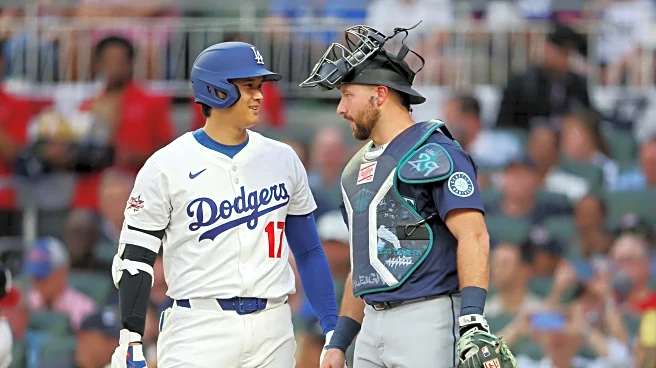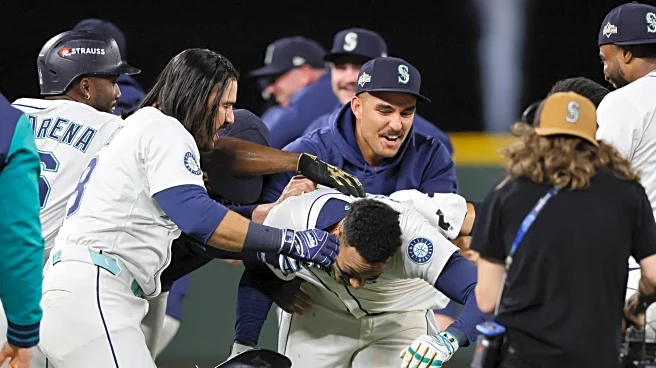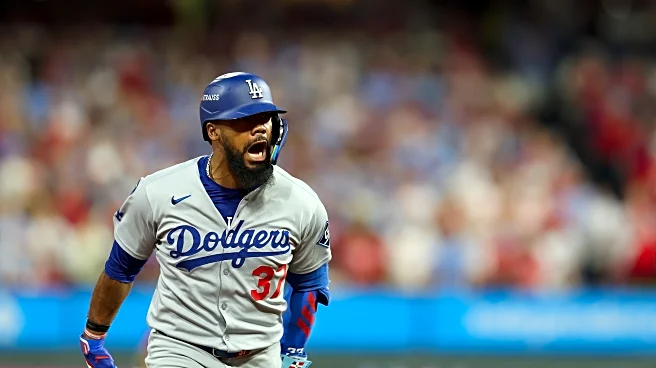What's Happening?
The New York Mets have emerged as the team with the highest payroll in Major League Baseball for the 2025 season, according to calculations by the MLB Labor Relations Department. The Mets' payroll stands at $323,099,999, surpassing other teams in the league. The Los Angeles Dodgers follow closely with a payroll of $321,287,291, largely influenced by Shohei Ohtani's deferred $700 million contract. Ohtani is deferring $68 million of his $70 million annual salary, which affects the present-day value of the Dodgers' payroll. The payroll figures are calculated to reflect the cash obligations of each team, including deferrals and signing bonuses, and are distributed to all teams. This data provides insight into the financial commitments of MLB teams for the current season.
Why It's Important?
The payroll rankings highlight the financial strategies and commitments of MLB teams, which can significantly impact their competitive edge and ability to attract top talent. Teams with higher payrolls, like the Mets and Dodgers, may have more flexibility in acquiring star players and enhancing their rosters, potentially leading to better performance on the field. Conversely, teams with lower payrolls might face challenges in competing at the same level, affecting their chances in the league. The financial dynamics within MLB can influence team strategies, fan engagement, and overall league competitiveness, making payroll data a crucial aspect of understanding the business side of baseball.
What's Next?
As the season progresses, teams will continue to manage their payrolls, potentially making adjustments through trades or contract negotiations. The financial strategies employed by teams could lead to shifts in player rosters and impact their performance throughout the season. Additionally, the league's financial landscape may prompt discussions on salary caps or other measures to ensure competitive balance. Stakeholders, including team owners, players, and fans, will be closely monitoring these developments to gauge their implications for the future of MLB.
Beyond the Headlines
The disparity in payrolls among MLB teams raises questions about the economic balance within the league. Teams with lower payrolls may struggle to compete with wealthier franchises, potentially leading to calls for reforms in revenue sharing or salary cap regulations. The financial commitments of teams also reflect broader economic trends in sports, where lucrative contracts and endorsements play a significant role in shaping the industry. These dynamics could influence future negotiations between players and teams, as well as the overall structure of MLB.













